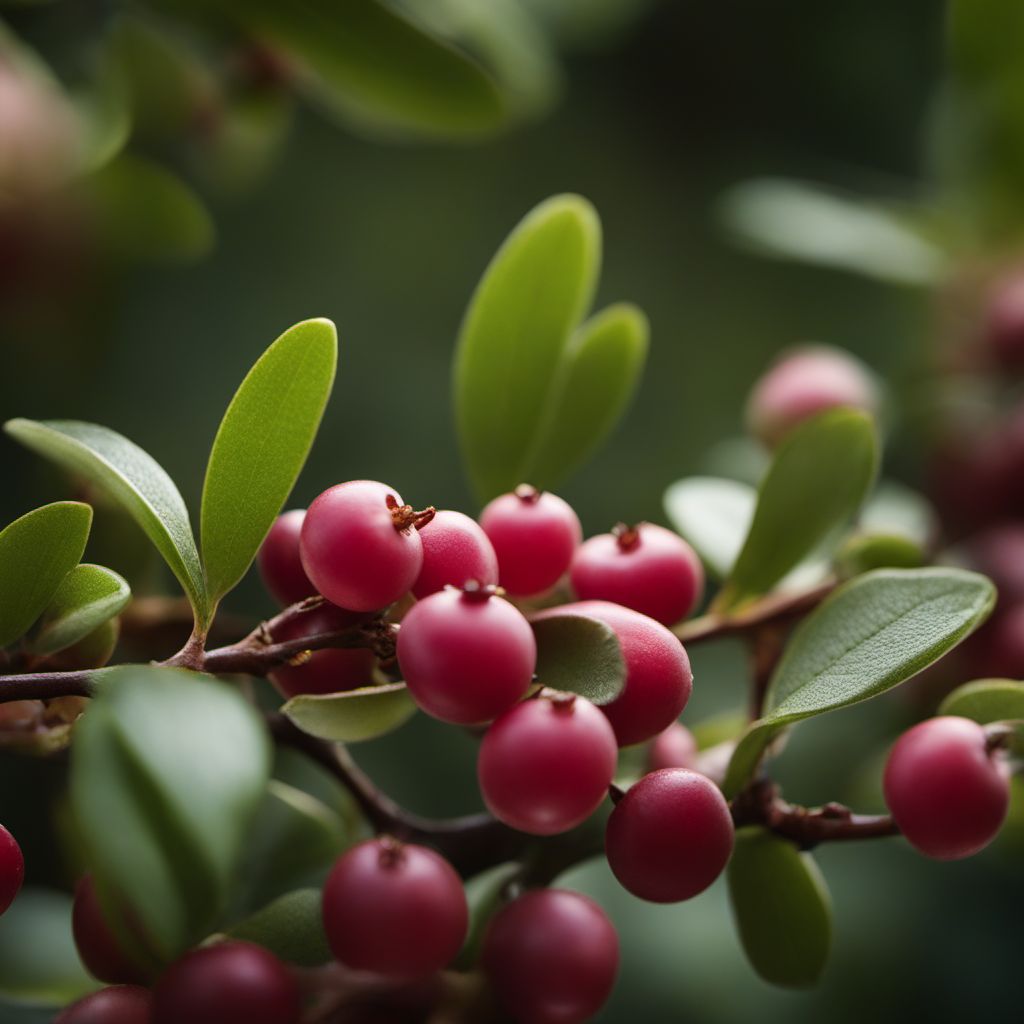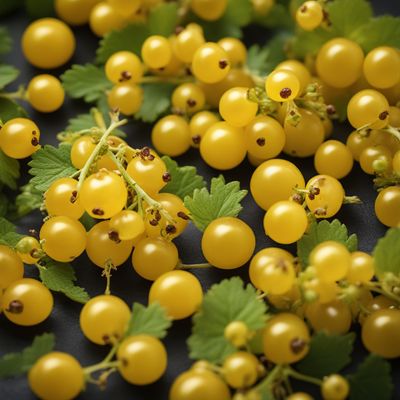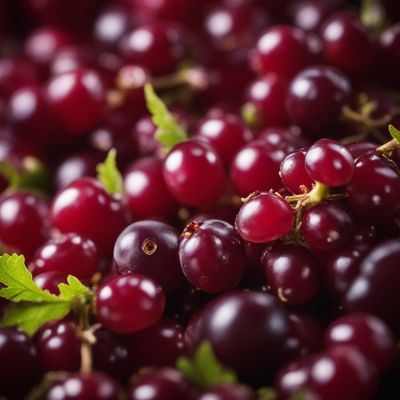
Ingredient
Bearberries
The Wild Berry Wonder
Bearberries, also known as kinnikinnick or uva-ursi, are small, tart berries that grow on low-lying shrubs in the wild. These wild wonders offer a unique flavor profile and are often used in jams, jellies, and herbal teas. With their vibrant red color and tangy taste, bearberries bring a touch of wilderness to your culinary creations.
Origins and history
Bearberries are native to North America and have a rich history of traditional use by Indigenous peoples. They were commonly used for medicinal purposes, including treating urinary tract infections. Bearberries are still foraged in the wild today and are also cultivated for commercial use.
Nutritional information
Bearberries are low in calories and a good source of antioxidants, vitamins, and minerals. They contain high levels of vitamin C and have been traditionally used for their diuretic and antiseptic properties. However, it's important to note that bearberries should be consumed in moderation due to their natural compounds.
Allergens
Bearberries are generally safe for consumption, but some individuals may experience allergic reactions. People with known allergies to berries or related plants should exercise caution when consuming bearberries.
How to select
When selecting bearberries, look for plump and firm berries with a vibrant red color. Avoid any that appear shriveled or discolored. Fresh bearberries should have a slightly tart aroma. If foraging in the wild, ensure you are knowledgeable about the specific species and their safety for consumption.
Storage recommendations
To store bearberries, gently wash them and remove any stems or leaves. Place them in a container lined with paper towels to absorb excess moisture. Store in the refrigerator for up to one week. Bearberries can also be frozen for longer-term storage by spreading them in a single layer on a baking sheet and then transferring them to a freezer bag or airtight container.
How to produce
Bearberries can be challenging to cultivate due to their specific soil and climate requirements. They thrive in well-drained, acidic soil and prefer cooler temperatures. If you have suitable conditions, you can try growing bearberries from seeds or cuttings. However, it's important to note that they are slow-growing and may take several years to produce a significant harvest.
Preparation tips
Bearberries can be used in a variety of culinary applications. They are commonly used to make jams, jellies, and sauces due to their natural pectin content. Bearberry tea is also popular and can be made by steeping the dried leaves in hot water. Additionally, bearberries can be incorporated into baked goods, salads, or used as a garnish for cocktails.
Availability
Bearberries are primarily found in North America, particularly in regions with cooler climates such as Canada and parts of the United States. They are also cultivated in some European countries.
More ingredients from this category » Browse all

Sea buckthorns
The Tangy Treasure of the North

Serviceberries
The Berry of Abundance

Aronia berries
The Mighty Antioxidant Powerhouse

Juneberries
The Sweet Delight of Juneberries

Haskaps
The Marvelous Haskaps

Blueberries
Bursting with Antioxidant Power: The Vibrant World of Blueberries

Other species and hybrids of genera Ribes and Vaccinium, not elsewhere mentioned
Exotic Berry Medley

Salal
The Wild Berry: Salal

Bilberries (generic)
The Secret Superfood: Unveiling the Power of Bilberries

Worcesterberries
The Tangy Delight: Worcesterberries

Golden currant
The Fragrant Spice of Delight

Native currant
The Indigenous Jewel